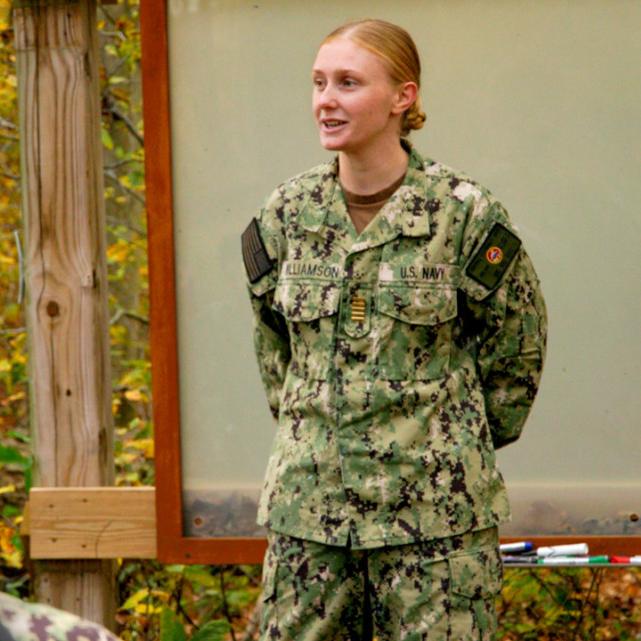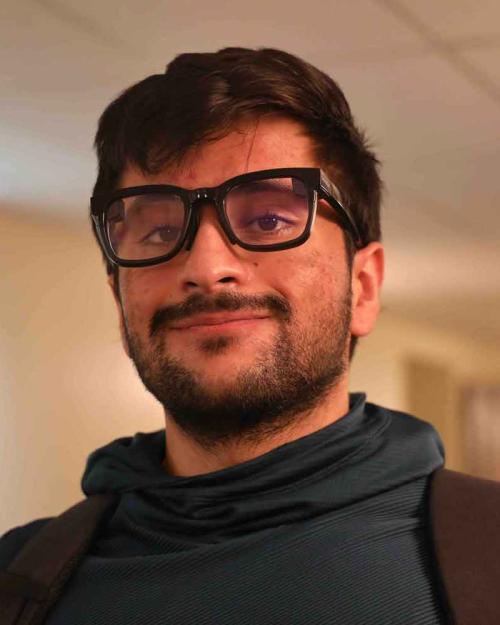For a person with hearing loss, a room full of people talking all at once can be a nightmare scenario. Even with hearing aids, it’s often difficult to hear the one person speaking right in front of you.
Nirbhay Narang ’25 has created smart glasses to help people manage this situation. The glasses use AI to provide transcriptions of conversations in real time, which can be viewed both on the glasses and on a phone.
“I’m passionate about human-computer interaction,” said Narang, a computer science major in the College of Arts & Sciences. “I consider myself a designer rather than an engineer and have friends who have been working in the smart glasses space for some time.”
Narang’s company, AirCaps, is taking pre-orders for the lightweight glasses, which will retail for $799. The technology works by capturing a conversation, movie audio or speaker’s voice through a phone’s microphone, transcribing it immediately on the phone and sending the transcription to the glasses. His company created the software and app that make the connection seamless.
In the U.S. alone, their first market, there are about 30 million people with disabling hearing loss, Narang said, not to mention hundreds of millions of others around the world.
“For many people, hearing aids are imperfect and too expensive, and they aren’t able to process the sounds you want to hear and leave out background noise,” he said.
“This is a really innovative technology with many potential applications,” said Tapan Parikh, associate professor at Cornell Tech and in the information science department at Cornell. “And Nirbhay has been resourceful in finding external collaborators both within and beyond Cornell.”
Narang sought out Parikh last year and has completed several independent study projects with him related to AI and Large Language Models (LLMs). Two of those have included a system that uses LLMs to develop profiles of people related to values and value orientation and an AI-enabled generator that can include video, music and text. They have also worked with a non-profit in India on a mapping tool for documenting the lives of pastoral communities.
“He works hard, and he works quickly,” Parikh said. “As soon as we have an idea, within a few days he will have built a prototype.”
Narang sees plenty of applications for the glasses beyond the subtitles use case, for people with attention deficit challenges or who are second-language learners, for example.
Narang said his experience as a Kessler Fellow last summer, as well as his current stint at the residency, an accelerator program in New York City, have helped him meet team members, strengthen his entrepreneurial skills and move the company forward.
“I’ve developed a problem-solving mindset and the ability to pick up new material quickly,” he said.




